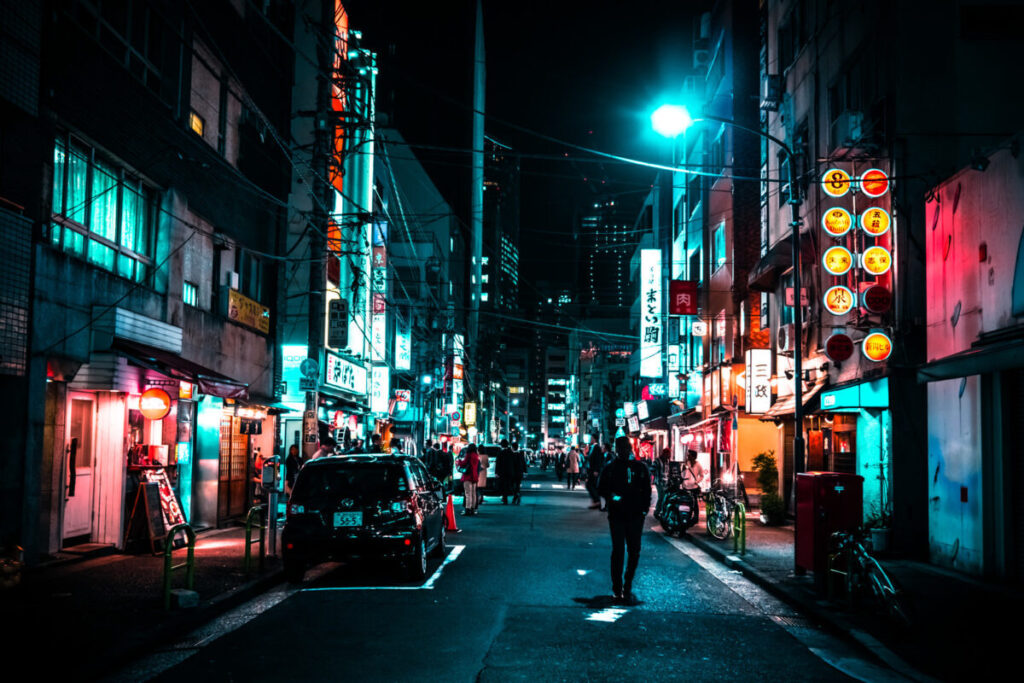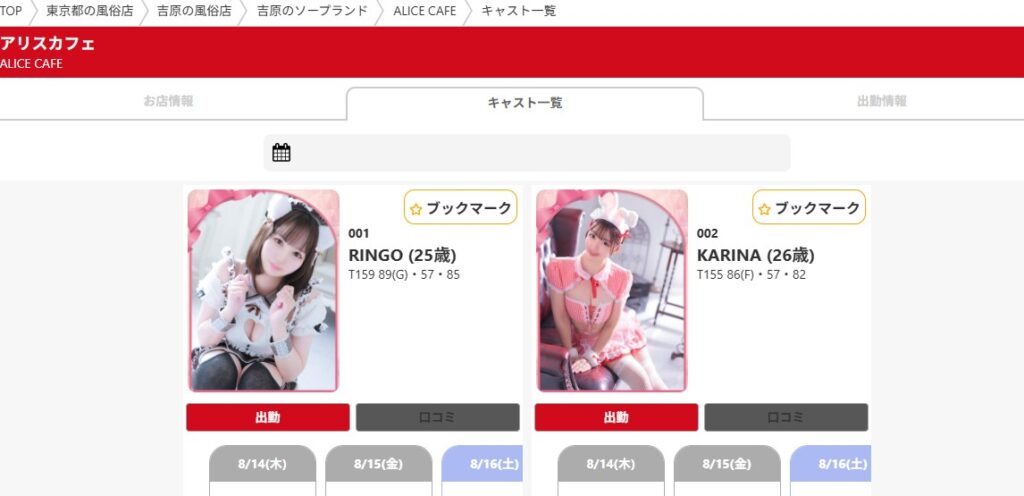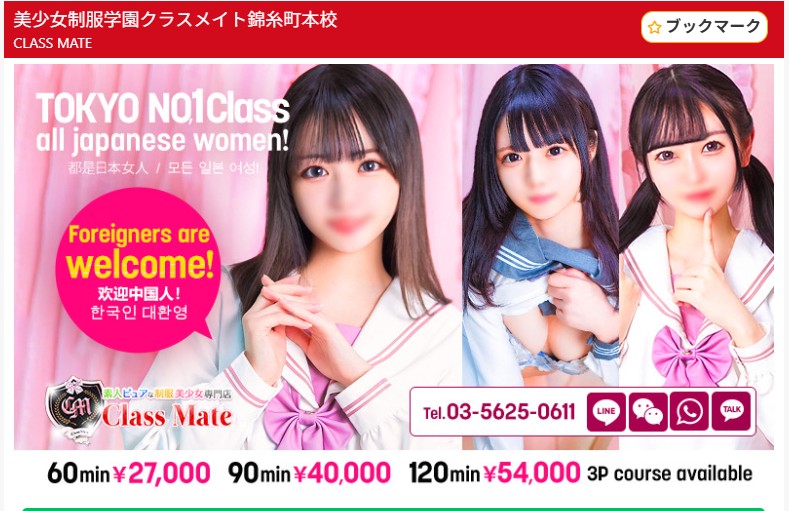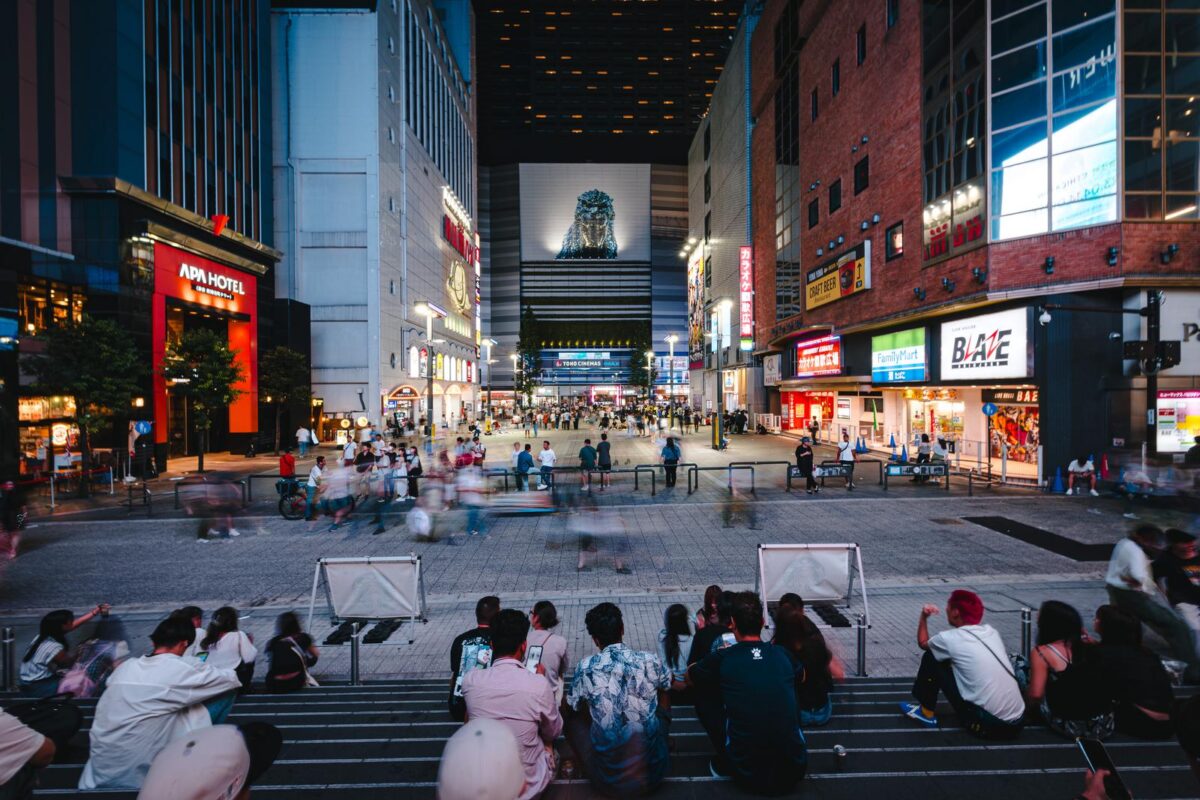“What is the meaning of Japan’s red-light districts?”
“Aren’t they supposed to be abolished, yet are there still places you can visit?”
Do you have these questions?
In this article, we will clearly explain such questions about red-light districts from the perspectives of historical background and on-site research.
Specifically, we will cover the following in this order:
- The meaning and origin of Japan’s red-light districts, and their differences from blue-line districts
- The social reasons behind the emergence of red-light districts and changes after their abolition
- Former red-light districts where traces still remain and information on shops you can actually visit

It takes about 10 minutes to read, and you’ll gain a deeper understanding of Japan’s red-light districts, including their historical context and current state. Please read until the end!
What Are Japan’s Red-Light Districts? Explaining Their Meaning and Origin

We will explain the meaning and origin of Japan’s red-light districts in a way that is easy to understand, even for first-timers.
First, we’ll clarify the “difference between red-line and blue-line districts,” followed by an exploration of “why red-line districts emerged” in the context of post-war Japan’s social background.
1.What Is the Difference Between Red-Line and Blue-Line Districts?
Japan’s “red-line districts” refer to special entertainment areas established after World War II.

After Japan’s defeat in 1945, the Allied occupation forces drew red and blue lines on maps. Red lines designated areas with special restaurants involving prostitution, while blue lines marked areas with establishments primarily focused on dining but engaging in discreet relations on the side.
Starting in 1946, red-line districts were established nationwide and were completely abolished in 1958 with the enforcement of the Anti-Prostitution Law.
Today, some areas retain traces of those times, and their streetscapes have become tourist attractions.
2.Social Reasons Behind the Emergence of Red-Line Districts
The emergence of red-line districts was driven by the social turmoil and strong demand in post-war Japan.

After the defeat in 1945, many people lost their jobs and homes, and women, in particular, were forced to turn to the sex industry to survive.
Additionally, the presence of Allied occupation forces significantly increased the demand for prostitution.
As a result, in 1946, the GHQ abolished the public prostitution system, and traditional pleasure quarters disappeared. However, the police, aiming to maintain public order, tacitly allowed certain areas to operate as “special restaurant districts,” marking them with red lines on maps.
This is the meaning and origin of Japan’s red-line districts.
Changes and Current Status of Japan’s Red-Light Districts After Their Abolition

We will clearly explain the changes and current status of Japan’s red-light districts following their abolition.
First, we’ll outline the “Anti-Prostitution Law and the abolition of red-line districts,” followed by an exploration of “how former red-line districts have changed” after their closure.
1.The Anti-Prostitution Law and the Abolition of Red-Line Districts
In 1958, the Anti-Prostitution Law was enacted, causing red-line districts to disappear from Japan’s streets.
During the impoverished post-war era, many women worked in these districts to make a living, and the areas thrived as gathering spots for Allied occupation forces and the general public.
However, growing movements to respect women’s rights, coupled with increasing international criticism, prompted the government to ban prostitution.
As a result of this law, red-line districts were abolished, and their buildings were repurposed into restaurants or residences.
This series of events is remembered as a significant turning point in post-war Japan’s shift toward new values.

This series of events is remembered as a significant turning point in post-war Japan’s shift toward new values.
2.What Happened to Former Red-Line Districts After Their Abolition?
Today, Japan’s red-line districts have largely faded as a cultural phenomenon, and few people are aware of them.
The bustling atmosphere of the past is gone, and many adult entertainment establishments have closed. However, some areas, such as “Yoshiwara” and “Tobita Shinchi,” continue to exist as entertainment districts.
Other former red-line districts have transformed into residential or business areas, though some retain buildings and streetscapes from that era.
For those interested in history, visiting these areas or taking a walking tour offers a chance to experience post-war Japanese culture.

Exploring with a tour guide can help you better understand the atmosphere of that time.
List of Major Former Red-Light Districts in Japan with Remaining Traces

The following are eight major former red-light districts in Japan where traces still remain:
- Yoshiwara (Tokyo) | Evolved into a soapland district
- Tamanói (Tokyo) | Now a residential area
- Hato no Machi (Tokyo) | Revitalized as a retro shopping street
- Tobita Shinchi (Osaka) | Continues operating in a restaurant format
- Matsushima Shinchi (Osaka) | Current business format persists
- Gojō Rakuen (Kyoto) | Transformed into a town of art and tourism
- Nakamura (Nagoya) | Now lined with residences and shops
- Yanagimachi (Fukuoka) | Now a residential area with changed streetscapes
Let’s explore each in detail.
1.Yoshiwara (Tokyo) | Evolved into a Soapland District
Yoshiwara is the most famous and popular entertainment district among Japan’s remaining red-light districts.
Once a traditional pleasure quarter with many courtesans, it transformed into a soapland district following the 1958 Anti-Prostitution Law.
While the pleasure quarter architecture depicted in movies and anime is largely gone, the culture of spending time with women persists today.
Known as Japan’s largest soapland district, it boasts many high-end establishments and is renowned for the high quality of its women.
Prices are relatively high, but the premium service quality matches the cost.
Even for first-time visitors, local staff can guide you to a shop that suits your preferences, ensuring a comfortable experience.

While researching and heading to a specific shop is a good approach, wandering the streets and choosing intuitively is a unique way to enjoy Yoshiwara.
As a place where you can safely experience modern culture while feeling the history of post-war red-light districts, it continues to attract tourists and history enthusiasts.
2.Tamanói (Tokyo) | Now a Residential Area
Tamanói was a distinctive red-light district in Japan, once lined with many “meishuya” (special bars) offering adult entertainment.
These meishuya were similar to modern pink salons, offering short-term interactions with women.
Compared to the upscale Yoshiwara, Tamanói was more affordable and had a down-to-earth atmosphere, making it popular with a wide range of people.
During the post-war turmoil, Tamanói thrived as a place where daily life and entertainment coexisted, creating a unique vibrancy.
Today, few of the original meishuya buildings remain, but the streetscapes and alleys still evoke traces of the past.

Visiting for tourism or historical exploration offers a valuable opportunity to learn about the culture and social context of post-war red-light districts while strolling through the area.
As a symbol of affordable, everyday entertainment culture, Tamanói is an essential spot for understanding the history of red-light districts.
3.Hato no Machi (Tokyo) | Revitalized as a Retro Shopping Street
Located about one kilometer from Tamanói, Hato no Machi was another red-light district thriving with meishuya establishments.
During the post-war chaos, it was popular among men and locals for its accessibility compared to the upscale Yoshiwara.
Today, Hato no Machi has transformed into a modern area with chain stores, pharmacies, and cafes lining the station area, leaving little trace of its former self.
However, by paying attention to narrow alleys and street layouts, you can still sense remnants of the meishuya era.

When visiting for tourism or historical exploration, walking through the area while imagining the culture of post-war red-light districts offers a vivid historical experience.
There’s a unique joy in discovering traces of past culture in a modern, safe neighborhood.
4.Tobita Shinchi (Osaka) | Continues Operating in a Restaurant Format
Osaka’s Tobita Shinchi is a historic entertainment district dating back to 1916, where the culture of traditional pleasure quarters still lingers.
In simple terms, it’s an area where you can spend intimate time with women, but it officially operates as “restaurants” to comply with legal regulations.
Inside, services are provided under the premise of “free love” between the women and customers, and job postings are listed as hostesses.
Tobita Shinchi is managed by a “culinary association” overseeing over 150 restaurants, giving the area an orderly and organized feel.
Contrary to stereotypes of intimidating figures, the association is run by ordinary local residents.

The area has also become a tourist destination, with foreign travelers seen taking photos and local families passing through on bicycles.
The experience is straightforward: choose a woman, go to a room on the second floor, select a course, and enjoy the service.
Prohibited actions include kissing or touching below the waist, with light physical contact being the extent of what’s allowed.
After the session, you’re given candy to mark the end.
While maintaining traditions from the Taisho era, Tobita Shinchi remains a safe and enjoyable destination, preserving its unique culture in the modern day.
5.Matsushima Shinchi (Osaka) | Current Business Format Persists
Matsushima Shinchi is a historic entertainment district in Osaka, officially operating as a restaurant area, but in reality, it remains a place where one can spend intimate time with women.
During the Taisho era, it thrived as one of Kansai’s largest pleasure quarters, reportedly employing over 4,000 women.
However, the area was destroyed during the Osaka air raids, and after relocation and reconstruction, around 100 establishments operate today.
Following the 1958 Anti-Prostitution Law, it outwardly transformed into a restaurant district, but the system of “free love” between women and customers persists inside the establishments.
As a result, women are recruited not as sex workers but as hostesses or attendants.
Due to Osaka’s ordinances prohibiting soaplands, this unique culture has developed.
The process for enjoying Matsushima Shinchi is simple:
- Find a woman of your preference.
- Enter a private room on the second floor, decide on the duration, and pay the fee.
- Take a shower.
- Spend intimate time with the woman, then shower again to conclude.
The term “chon-no-ma” (literally “a short while”) refers to the brief duration of the experience.

Even first-time visitors can enjoy the area safely once they understand the process.
6.Gojō Rakuen (Kyoto) | Transformed into a Town of Art and Tourism
Gojō Rakuen was once a thriving entertainment district in Kyoto, known as a red-light district after the war where many women worked.
At the time, pleasure quarters and restaurants lined the streets, bustling every night. However, after the 1958 Anti-Prostitution Law, the area began to change significantly.
Today, many buildings have been renovated into art galleries, cafes, and small shops, making it a popular area for casual strolls by tourists and locals alike, while retaining the charm of its old streetscapes.

When exploring, enjoy the exteriors of historic buildings and the atmosphere of the alleys, take a break at a café, or admire works by local artists.
Visiting with an understanding of its historical background allows for a deeper appreciation of Gojō Rakuen’s transformation and cultural allure.
As a fresh addition to Kyoto’s tourism scene, it’s highly recommended for international travelers.
7.Nakamura (Nagoya) | Now Lined with Residences and Shops
Nakamura in Nagoya was once a bustling entertainment district known as a red-light area.
At the time, numerous restaurants and pleasure quarters filled the streets, brimming with activity every night.
However, with the 1958 Anti-Prostitution Law, the red-light district was abolished, and the area’s role changed significantly.
Today, Nakamura is primarily a residential and commercial area, with little of its former vibrancy remaining.
Still, walking through the alleys reveals traces of old buildings and the atmosphere of the past, making it an intriguing spot for history enthusiasts.
In recent years, cafes and small shops have increased, blending the daily lives of locals with the area’s historical backdrop.

When exploring, it’s recommended to reflect on its past as a red-light district while leisurely enjoying the modern Nakamura.
A stroll through the area offers a chance to feel the contrast between past and present, providing a new perspective for Nagoya tourism.
8.Yanagimachi (Fukuoka) | Now a Residential Area with Changed Streetscapes
Yanagimachi in Fukuoka was once known as a red-light district, bustling with numerous restaurants and pleasure quarters every night.
During the post-war turmoil, many women worked in the area, and the district was filled with vibrant energy.
However, after the 1958 Anti-Prostitution Law, the red-light district was abolished, and Yanagimachi underwent significant changes.
Today, it is a calm area lined with residences and shops, safe for tourists to explore.

While walking through the old alleys or observing remnants of past buildings, you can experience the contrast between the modern lifestyle and the area’s historical changes.
Three Shops to Experience the Atmosphere of Japan’s Former Red-Light Districts!
We introduce three shops where you can experience the lingering atmosphere of Japan’s former red-light districts.
- [Soapland] Alice Café (Tokyo, Yoshiwara)
- [Delivery Health] Bishōjo Seifuku Gakuen Classmate Kinshichō Main Branch (Tamanói, Hato no Machi)
- [Restaurant] Yumeno-ya (Osaka, Tobita Shinchi)
Let’s explore each in detail.
1.[Soapland] Alice Café (Tokyo, Yoshiwara)

Souce:Alice Café
“Alice Café” is a maid-themed soapland located in Tokyo’s Yoshiwara area.
The interior has a cute maid café atmosphere, making it popular among international visitors wanting to experience Japanese culture.
The prices are relatively affordable for Yoshiwara, making it a great choice for first-time visitors.
The staff consists mostly of young women in their early 20s, offering fresh charm and friendly hospitality.
Play styles range from sweet, romantic interactions to slightly bolder services, catering to a wide variety of preferences.

Customers can bring their own cosplay costumes as an option, allowing for a personalized experience with their preferred outfits.
It’s recommended for those seeking an affordable, quintessentially Japanese experience.
| Address | 4-32-3 Senzoku, Taitō-ku, Tokyo |
| Operating Hours | 10:00 AM – 12:00 AM |
| price | From 44,000 yen for 60 minutes |
| Official Website | https://yoasobi-heaven.com/ja/tokyo/A1311/alice_cafe/ |
2.[Delivery Health] Bishōjo Seifuku Gakuen Classmate Kinshichō Main Branch (Tamanói, Hato no Machi)

Souce:Bishōjo Seifuku Gakuen Classmate Kinshichō Main Branch
Bishōjo Seifuku Gakuen Classmate Kinshichō Main Branch is a popular delivery health service where you can spend special time with girls in cute school uniforms.
As the name suggests, the agency features many young women with a loli or idol-like vibe, with over 10 girls typically available at any time.

The process, from booking to service, is straightforward and easy to understand, even for international visitors experiencing Japanese uniform culture for the first time.
The girls arrive in clean, Japanese-style school uniforms and greet customers with smiles.
The service includes a rich variety of options beyond the standard play, such as “raw fellatio,” “69,” “facial,” “swallowing,” and “urination.”
The environment is perfect for fully enjoying Japan’s unique uniform play, making it highly recommended for tourists.
| Area | Departing from Kinshichō, covering Tokyo’s 23 wards (contact for details) |
| Operating Hours | 10:00 AM – 6:00 AM the next day |
| price | From 27,000 yen for 60 minutes |
| Official Website | https://yoasobi-heaven.com/ja/tokyo/A1313/k-classmate/ |
3.[Restaurant] Yumeno-ya (Osaka, Tobita Shinchi)

Souce:Yumeno-ya
“Yumeno-ya” is a top-tier restaurant located on the main street of Osaka’s Tobita Shinchi, renowned for its popularity in the area.
The shopfront always draws attention, with many passersby stopping to catch a glimpse of the women, reflecting its widespread appeal.
The women here are diverse, ranging from those with mature, refined charm to younger types with adorable smiles.

Many regular customers opt for longer courses to savor extended, special moments, which is part of the establishment’s allure.
| Address | 3-2-7 Sannō, Nishinari-ku, Osaka City, Osaka Prefecture |
| Operating Hours | 10:00 AM – 12:00 AM |
| price | From 11,000 yen for 15 minutes |
Summary | The Meaning of Red-Light Districts and Their Remaining Traces Today
Japan’s red-light districts refer to areas once officially designated for prostitution under legal regulations.
Red-line districts were authorized areas, while blue-line districts were unauthorized, but both were abolished following the enforcement of the Anti-Prostitution Law.
Today, many of these areas have transformed into residential or commercial districts, though some, like Yoshiwara and Tobita Shinchi, continue operating in unique forms, preserving traces of their past.
When visiting, it’s important to understand local rules and etiquette and to act with respect.
Whether you’re a first-time visitor or a repeat guest, enjoy the remnants of Japan’s red-light districts safely and savor a special night.




コメント